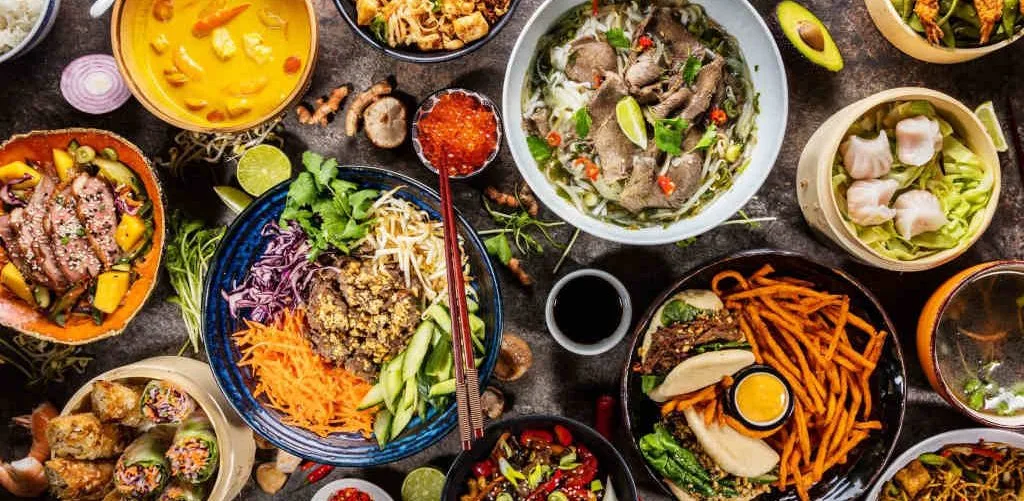Embark on a tantalizing journey as we delve into the vibrant tapestry of flavors that define Asian cuisine. From the aromatic spices that dance on your taste buds to the healing properties of ancient herbs, this culinary adventure promises to be a feast for the senses.
Unveiling the Essence of Asian Cuisine
Asian cuisine, a harmonious symphony of spices and herbs, reflects a rich cultural heritage spanning diverse countries such as India, China, Thailand, and Japan. These culinary traditions are deeply rooted in history, with each region contributing its unique blend of flavors to the global culinary landscape.
Key Ingredients that Define Asian Flavors
- Saffron-infused Delights: In the heart of Indian cuisine, saffron takes center stage, imparting a golden hue and distinct flavor to dishes like biryani and korma. This regal spice is not just a feast for the eyes but also a treat for the taste buds.
- Umami Elegance with Soy Sauce: Journey east to Japan, where soy sauce reigns supreme. Its umami-rich profile enhances the savory notes in dishes like sushi and ramen, showcasing the artistry of Japanese culinary expertise.
- The Heat of Thai Chilies: Thai cuisine is celebrated for its perfect balance of sweet, sour, salty, and spicy flavors. Thai chilies add a fiery kick to dishes like Tom Yum soup, elevating the dining experience to new heights.
- Five-Spice Alchemy in Chinese Cooking: Step into the realm of Chinese cuisine, where the five-spice blend weaves magic into stir-fries and roasted meats. Anise, cloves, cinnamon, Sichuan pepper, and fennel dance together to create a symphony of flavors.
Exploring the Healing Powers of Asian Herbs
- Turmeric’s Golden Touch: Beyond its culinary allure, turmeric is revered for its medicinal properties in Ayurveda. This golden spice, prevalent in Indian cuisine, is known for its anti-inflammatory and antioxidant benefits.
- Ginseng’s Vitality Boost: Korean cuisine often incorporates ginseng, a herb renowned for its adaptogenic properties. Beyond its earthy flavor, ginseng is believed to enhance vitality and promote overall well-being.
- Pandan’s Fragrant Charm: Pandan leaves, commonly used in Southeast Asian desserts, impart a sweet, floral aroma. Beyond its delightful flavor, pandan is believed to have antioxidant and anti-inflammatory properties.
As we conclude our culinary odyssey through the aromatic landscapes of Asian spices and herbs, it becomes evident that Asian cuisine is a treasure trove of diverse flavors and healthful benefits. Whether you savor the warmth of saffron-laced dishes or embrace the invigorating essence of ginseng, each ingredient tells a story of culinary artistry and cultural richness. Let your taste buds be your guide on this exotic journey through the heart of Asian gastronomy.
Learn more about Asian Cuisine:
Savoring the Silk Road: Discovering Central Asian Delicacies

